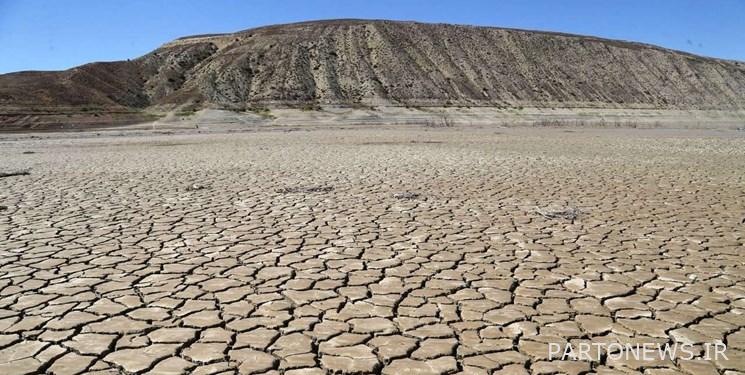“Virtual water” The solution to the global water shortage crisis / Countries use water resources abroad

Today, world food security is tied to how water is used in the agricultural sector, and countries are trying to find a way to make optimal use of this life-giving fluid. The highest water consumption in the world, including our country, is in the agricultural sector, and in different countries, 60 to 90% of water consumption is consumed in this sector.
On the other hand, the water crisis has started in most countries, and the food supply of the future world depends on what solution we can find to use it properly and prevent its wastage. Some experts even believe that the future war of the countries will be based on water.
Expert groups in different countries have tried different ways to overcome the water problem. For years, they have been working on breeding plants and reducing their water consumption. In fact, plant breeding specialists have genetically modified plants that consume less water. At the same time, it produces more crops, which are known as water-resistant crops. In addition, in some countries, cultivation patterns are implemented to avoid the cultivation of water crops and to give priority to low-water and strategic crops.
But recently, scientists have discovered a new solution that“Virtual water trade” Is. In fact, the plan is for countries to import products that consume more water instead of producing domestically. In this way, water enters the country from outside the borders.
Perhaps this is because many countries are reluctant to cultivate melons, watermelons, and summer crops extensively. Instead, countries unfamiliar with the category have become world leaders in the production of these products. Iran ranks first and second in the world in the production of melons and watermelons and annually produces 5.5 million tons of tomatoes.
news station Waterfront print netWorkExplaining the concept of virtual water trade, he writes: To understand this, you need to know how countries with water scarcity provide food security, clothing and other necessities that require more water. Global trade, meanwhile, has allowed countries to actually increase water consumption outside their borders by changing their import and export policies.
When food and other products are traded between countries, in fact, traces of virtual water should be sought in the exchange of these goods. In fact, many countries consume their water resources by importing goods from other countries, and it is an obvious fact that countries with scarce water resources do not hesitate to meet the needs of their people.
Virtual water actually helps countries to have the support of other countries in meeting their water needs, and this is the policy that is being pursued today.
* Why virtual water imports are important
Since different nations seek to provide food security, water, energy and other necessities for their people and help develop their country’s economy, most countries consider the import and export of goods as the main strategy. A country may import with the goal of self-reliance, but in the meantime, water-scarce countries should know how to look for virtual water in this category of import and export, one of which is to import water-dependent products instead of domestically produced Is.
A country seeking energy security may spend its natural resources solely on electricity generation and prefer to import food products, but in the meantime most countries are striving to be self-sufficient in the production of basic products.
The import of virtual water helps us to understand the dependence of the economy on the resources of other countries. For countries with water shortages, it is certainly attractive to import virtual water through the import of water products, which in fact relieves the pressure of water shortages. For example, in the Mediterranean, the Middle East and Mexico. Nordic countries pursue such a goal with more imports than exports of agricultural products. In Europe, 40% of their water consumption traces should be sought abroad.
Countries import and export according to their needs, but in any case, water-scarce countries must take into account the import of virtual water. The United States, China, India, Brazil, Argentina, Canada, Australia, Indonesia, France and Germany as majorMost They are exporters of virtual water and in the meantime they are bigMost Virtual water importers are the United States, Japan, Germany, China, Italy, Mexico, France, the United Kingdom and the Netherlands. Meanwhile, some countries are exporters and importers of virtual water, such as North and South America such as Canada, Brazil and Argentina, South Asia such as India, Pakistan, Indonesia and Thailand and Greater Australia.Most They are considered exporters of virtual water, but the countries of North Africa and the Middle East, Mexico, Europe, Japan and South Korea are only importers of virtual water.
* Conserve water resources by trading wisely
Many countries conserve their resources by importing products that require more water, as well as by exporting products that require less water. The total water consumption for the import of agricultural products, which if the same products were to be produced within the countries themselves, is 2407 billion cubic meters per year. While this amount of product is produced abroad with only 1038 billion cubic meters per year in exporting countries, and in fact, by importing them, 369 billion cubic meters per year is saved, which is equivalent to 4% of water consumption in the agricultural sector.
8363 billion cubic meters of water is used annually for agricultural production.
According to the report, the policy of decision-makers in countries facing water shortages is to store more water and not allow it to cross its borders. Mexico, for example, imports 12 billion cubic meters of water a year by importing corn and uses it to produce products in which it has an advantage.
end of Message/
You can edit this post
Suggest this for the front page
.

